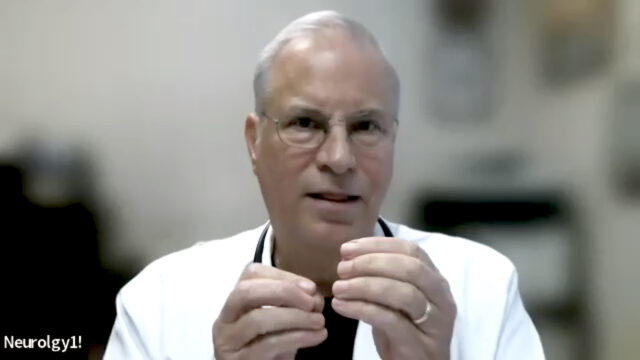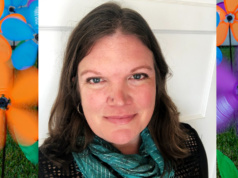Welcome back everyone to Answers for Elders Radio Network. And we are here with Dr Paul Winner, who is the Senior Director of the Premier Research Institute and the director of the Memory Disorder Center in West Palm Beach, Florida, the nice sunny part of the country of the USA. And I’m way up in the opposite corner, in the Pacific Northwest, and we have a rainstorm, so there you go – I’m glad we still have power. We may even lose some later today, so I hear, Dr Winner. But, anyway, we’re here talking about the progression and the promise of Alzheimer’s disease that’s going on, and I am so excited, Dr Winner, you’ve given us so much hope. It’s really about saying that it’s not just talk. We’re actually making some breakthroughs. We’re knowing things about the disease that we’ve never known before, and so I want to talk a little bit about the opportunities out there, and what’s going on, and what’s happening. So Dr Winner, welcome back.
– Thank you very much. And yes, there’s definitely a lot of optimism. There is definitely hope for patients with Alzheimer’s. I think the key is that we have several targets. We’ve started to understand this disease a little better. We understand a lot more about amyloid, it’s toxic form, about tau, how it progresses, how there’s nerve damage. These are all targets, these are all options to stop them. So our targeted research is to try to remove the toxic amyloid, to prevent its formation, to uncouple it, make it easier to be removed, so there’s three different options there, three different treatment algorithms to remove the tau, the toxic tau, because there are basically plaques and tangles, amyloid and tau, so that’s another target. To decrease inflammation, which is another target to be neuro-protective, to prevent cell death, which is that single to address the glial cell for inflammation. These are all targets — these are all options, and all of these are being tested right now, and there is definitely optimism in several of them. Some we feel we’ll have some FDA approved medicines, possibly in 2023, definitely within the next two or three years. We should have several with the way the research is going.
There’s an enormous amount of optimism on our side as researchers. We we try to be very positive, but we do have to be a little careful. We do not have the ability today to stop Alzheimer’s dementia. Let’s make that clear. We do not have a cure. That’s okay, we’re working to that. That’s a goal, but that’s not present. But we can slow the progression of the illness. And we have shown we were able to remove amyloid. So that’s some key issues. When I say slow progression, you want to get in front of this. It takes 15 to about 22 years for the amyloid to be deposited. During all that time it’s causing trouble, damage, inflammation, cell death, production of tau.
So you want to get in there as early as you possibly can. You want to get there even before patients have clinical symptoms. How in the world could we do that? Well, we have bio-markers now, we can tell if someone biologically has the markers: positive amyloid, positive tau, positive nerve damage, already present. Yet their clinical testing is normal, and they may only say I’m just not as sharp, I’m just starting to have some trouble with losing things. It’s not really affecting their life yet, but it’s there. So we can do that today, and those studies are ongoing right now. We are doing it now, I have patients under treatment.
Then there’s the next group. They clearly have trouble there. We call MCI: mild cognitive impairment. When we talked to them, they come in voluntarily. It’s the last year or two or three, maybe even more. They’re having some trouble. They’re starting to forget things. They’ve got to do lists to go to the grocery store, which they never did before. They’re forgetting names, which they never did before. That’s a key issue. Or they’re actually a little more trouble now. They need directions, they need someone else to help them in the car to drive, they need someone else to help them with the checkbook, because they’re making too many mistakes, or they can’t do the recipes anymore without someone there. So that’s more advanced. That’s into we call the milder form of Alzheimer’s. The other two are early Alzheimer’s. This is where we can slow down the deposition of amyloid in the brain — that’s been done. In fact, there’s already a medicine, aducanumab, that’s FDA approved, but there are a lot of issues around it, and it’s only used still in research primarily.
But two others have shown very significant promise recently in Phase 2 studies. They’ve shown reduction in the deterioration of cognitive function, where they were able to show where the placebo was deteriorating, the active monoclonal antibody group deteriorated to a lesser extent about 27 to 32 percent, depending on the study. That’s very important to note that. The clinical relevance is still being determined and it doesn’t happen right away. It takes about six months to a year plus to remove amyloid to about a 60 to 70+ percent, and it takes about 18 months for us to really see what I’ve just observed, but this is significantly positive.
The medicine does what it’s supposed to do. It removes the amyloid, and it did slow — in the monitoring we did for cognition and for function — compared to placebo, so you had less of a decline in the group that was on this active medicine. So therein lies one aspect. But I said there’s many other things for doing. We’re looking at anti inflammatory-type medicines, neuro-protective type medicines. Those are a little bit in their earlier studies, but we do have some promise. The Athira 1017 FOSCO is a study we’re doing. We’ve completed the ACT study, we’re now on the LIFT study. These are giving us some very nice, interesting, i t’s a new target that we’ve not had before. It’s called the met receptor system that we’re studying, and I can get into that as well. But there are multiple targets.
There’s something else called ALZ801, and basically what this does, it prevents the monomer, the beginning of that bad protein A Baker 42 when it’s single, when it becomes double and triple and more. It becomes oligomer and then folds and it becomes bigger and becomes essentially what we call the plaque and cause inflammation. How about if we don’t let that happen? We block it. So that’s another aspect that’s being looked at. It’s only being studied, though, in patients who have what they call APOE homozygous or heterozygous, and the data in so far is very interesting and very promising, but we’re not sure what we’re gonna do with that yet, but something to watch.
There’s a lot of positive issues here, and there are many others I haven’t even touched on yet that could be considered. By the way, there’s not just one or two monoclone antibodies to remove amyloid, there are several. Why would you want to have several, when you just want to have one?, Well, it doesn’t work that way. There’s all different variants on Alzheimer’s. Some people will respond better to one than the other. There are different side effect profiles. So these medicines have done what we’ve asked them to do, but they also have side effects. Knowing their genetic APOE status helps us determine possibly which one to pick under what circumstances, because we do see increased side effects on people who are homozygous or heterozygous.
What am I saying? APOE4 means you get one of these four, four is not the gene you want from mom or dad. But if you get one from each and they’re two fours, that’s homozygous. If you get one from mom or Dad that’s heterozygous, it increases the risk of potential side effects from some of the monoclonals as we have it now. So what I’m showing you are discussing with you is we know a lot. We can determine if you have amyloid in the brain, we have options to consider to remove it. We can determine if your risk factors for side effects are higher, and determine and discuss what we should do. We could pick other medicines. We have IV forms, subcutaneous forms, and oral forms of different types. But for the monoclonals we have subcutaneous and IV. So look at the options that are being presented to patients. Right now, this is research, but we do anticipate that this will start to be coming out, be FDA approved in different versions, rather soon.
– That is so amazing. And to think about where we were a year ago. I remember participating in an Alzheimer’s Walk and they’d show that white flower that someday there’s going to be a cure, you know, and where everybody’s carrying these colored flowers, and it was a pipe dream. For those of us that have participated in the Alzheimer’s Walk, we’ve seen an evolution happen with this disease that wasn’t very promising, but you know, I’m now envisioning how many white flowers are going to be out there in the future, which is really amazing. And it’s thanks to people like you and also thanks to people that are participating in the clinical research trials. Because we couldn’t get anywhere we didn’t have them participating. That’s the thing that we want, to encourage people to participate. Being on the cutting edge of something, that is on the verge of a medical breakthrough, is pretty darned exciting, and I am so thrilled to hear this news.
– So Dr. Winner, we’re gonna do one more segment for everyone. In the meantime, I want to get your contact number. But also, if they call you from another state, what happens on that phone call?
– We’ll redirect them, we’re part of a large network of research centers and essentially you’re doing Phase 1, 2 and 3. These are early-stage research in human beings with the illness. We’ll do our best to direct you with the information you give us to someone who can help you in your area. But you can always use the Alzheimer’s Association, which is across the whole country, or the American Academy of Neurology, which also has the ability — they have a a patient arm that can help you as well. So there are a lot of good sources, but we’ll do our best to get you that help. The number (561) 851-9400, that’s (561) 851-9400. Our website is Premier Research Institute, that’s https://premiereresearchinstitute.com/ and you can just quickly get information in there, and we’ll get right back to you.
– Fabulous, and for those of you that want to be involved, we do have one more segment coming up next.











